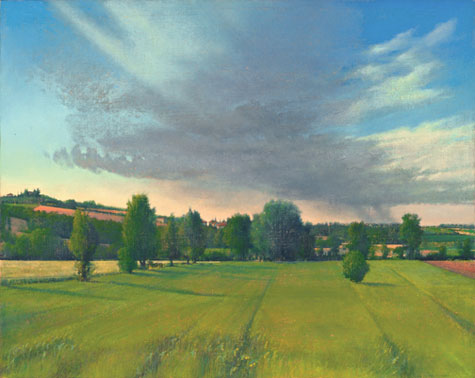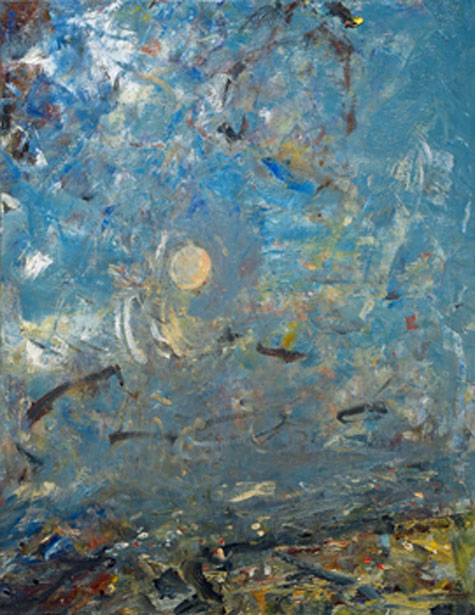
|
An artistic intersection between Joseph Nicoletti and Ying Li happened in northern Italy. These very different painters from widely differing backgrounds found common interest in the Italian landscape, and have made paintings whose similarities illuminate their differences.
Nicoletti has been teaching painting at Bates College for years, and his work has been widely shown here in Maine and around the country. He was born in Italy, came to the United States as child, and returns to Italy regularly. His paintings are carefully rendered with deep space, classical detail, and orderly compositions
Ying Li grew up in Maoist China and was trained in school by painting careful renderings of Mao. She came to the United States as an adult, and now makes free-wheeling, loose, lively paintings that are nearly abstract. She has exhibited extensively, but this is her first show in Maine.
Nicoletti and Li met at an artist residency in Umbria and discovered a shared passion for the northern Italian landscape that underlies the wide divergence in their approach. Their differences are part of what makes this show interesting. Both are accomplished, mature artists who know what they're doing. Both know a lot about color, paint handling, tone, and pictorial space. And when they paint the same scene, their paintings have a kind of family resemblance to one another.
But their approaches, and their results, are polar opposites. Nicoletti seeks to present the landscape with nearly photographic verisimilitude, with hedgerows, trees, fields, sky, and hills, so they might be recognized by anyone who has been there. His paintings look realistic, but of course are not. Like any painter, he depicts not only what he is seeing but also how he is seeing it, and how he chooses to interpret what he sees.
These landscapes are, like all landscape paintings, fictions that Nicoletti has crafted to tell the story he wants to tell about his experience. He chooses to use careful rendering, tightly controlled brushwork, finely modulated color relationships that reflect the real colors of the land, and classical perspective to define the space. To accomplish his ends, he tweaks color and tone so the space looks right, chooses which local color relationships will work best, and generally uses the painter's toolbox of techniques to make his paintings pass the basic test of realistic landscape paintings: when you look at them, you can almost feel a slight breeze in your face.
Li, by contrast, uses the landscape as foundation for improvisation with paint. She lays it on the canvas in thick strokes, moving it around to allow for accident and gesture, building an effect that is almost sculptural in its texture. There is some room for representation in few of the paintings in this show, but it's secondary to the impulse that is driving Li's intentions.

"VALLEY FULL MOON" by Ying Li
|
You can see, in a few of them, how she has taken the same colors and basic shapes from the landscape that Nicoletti has used, but for Li these are just an armature for the events that take place on the canvas. It gives the paintings a recognizable structure, but her ends, and the means to them, are quite distinct from his.